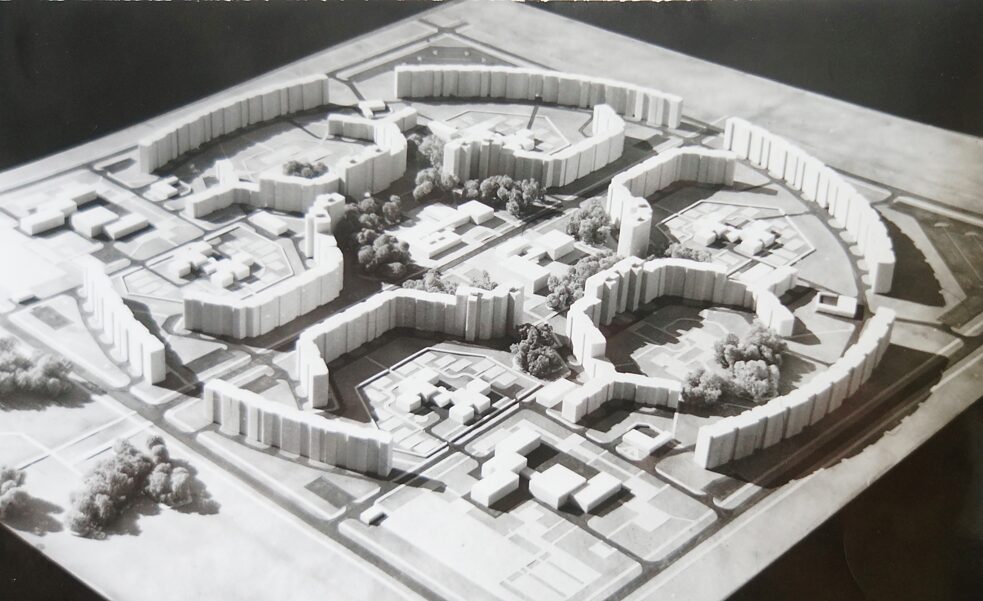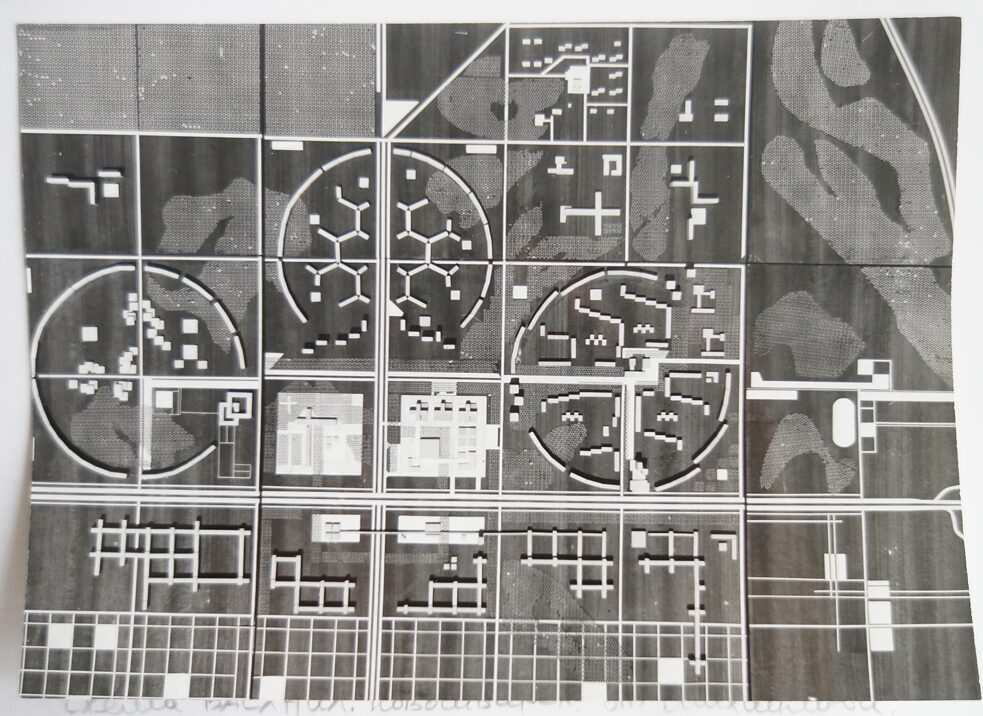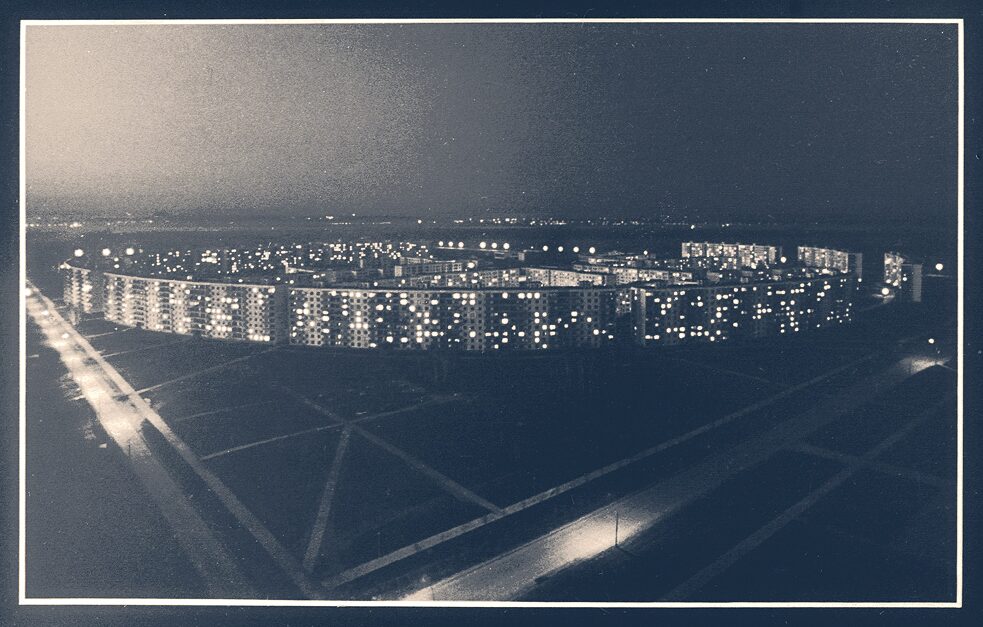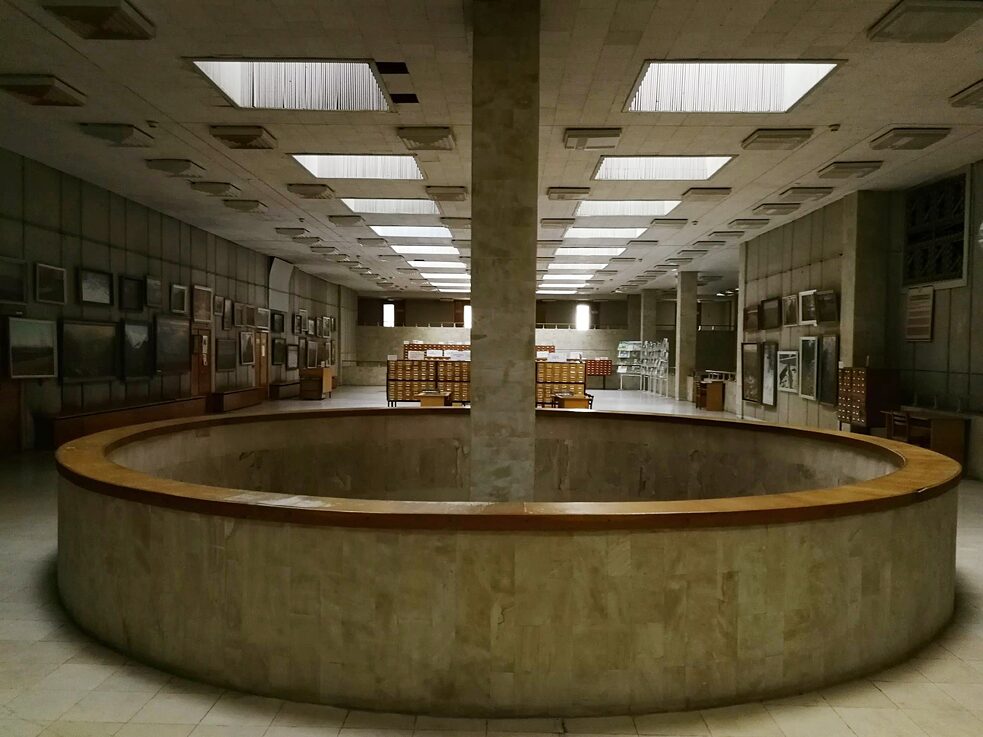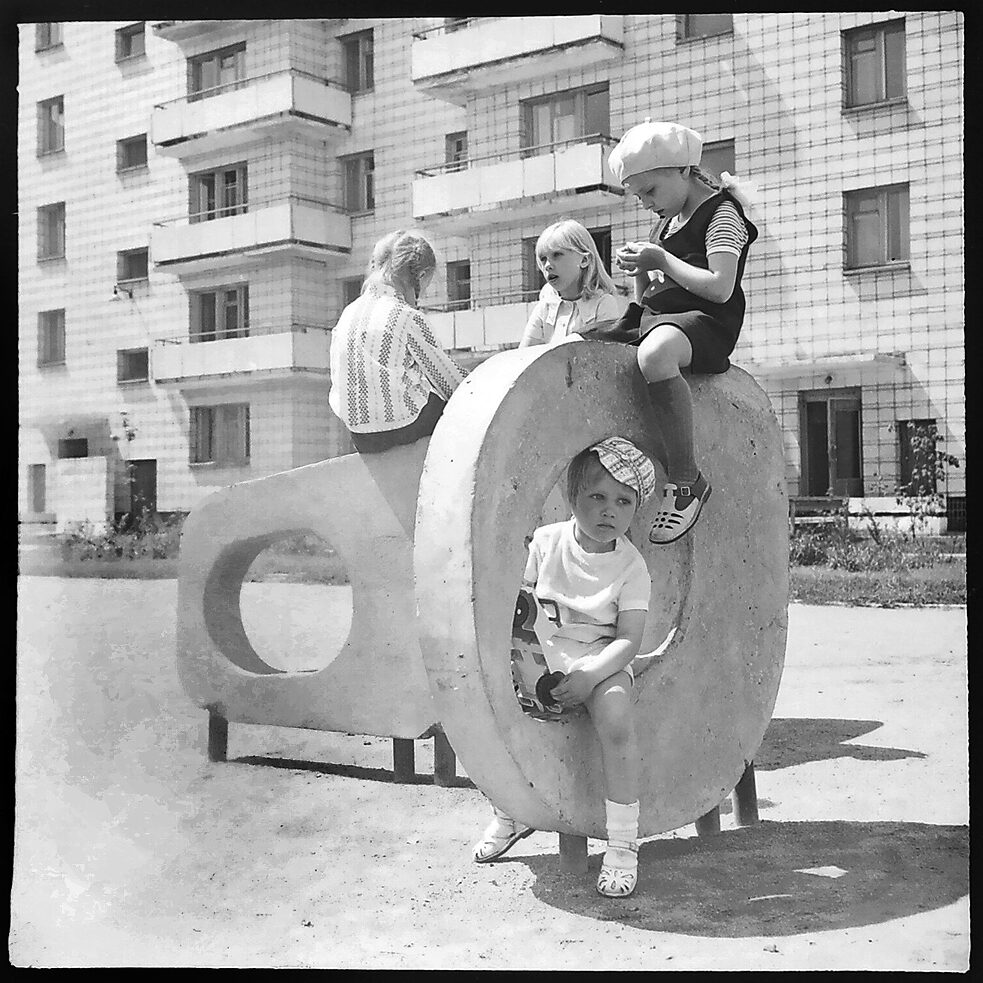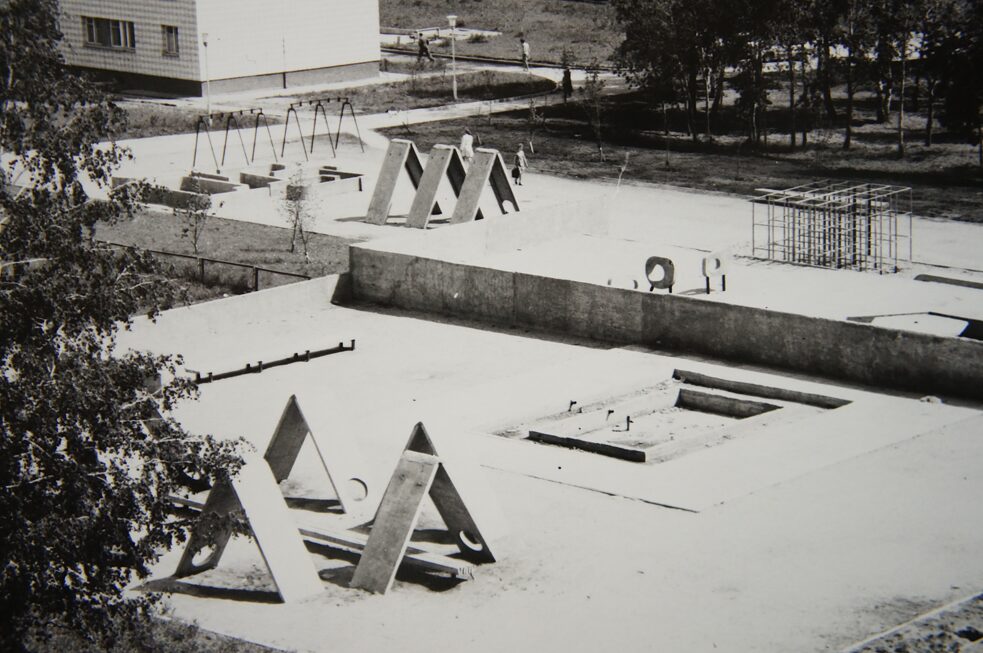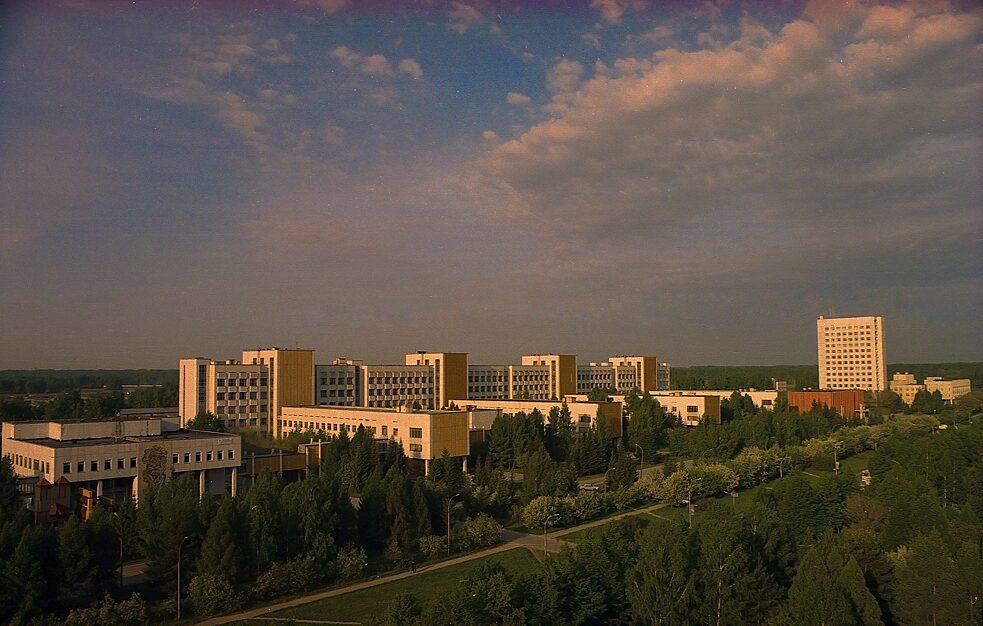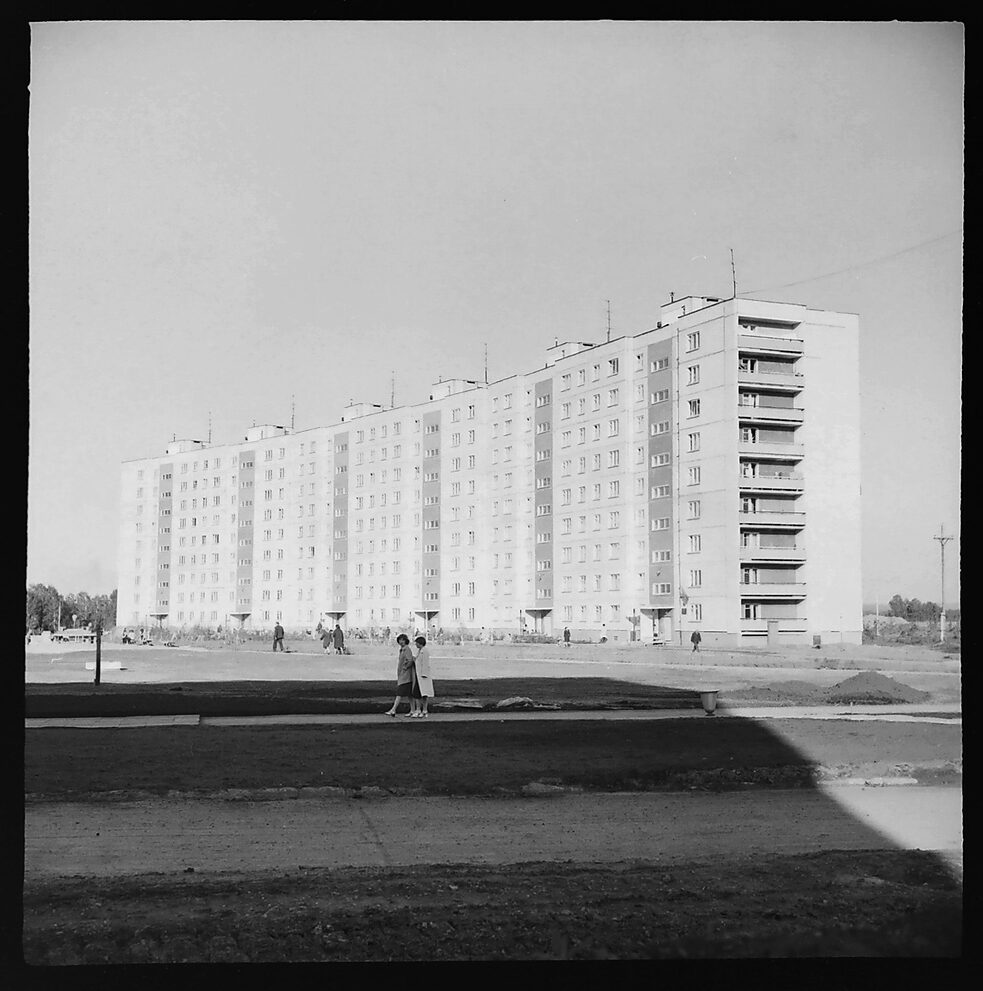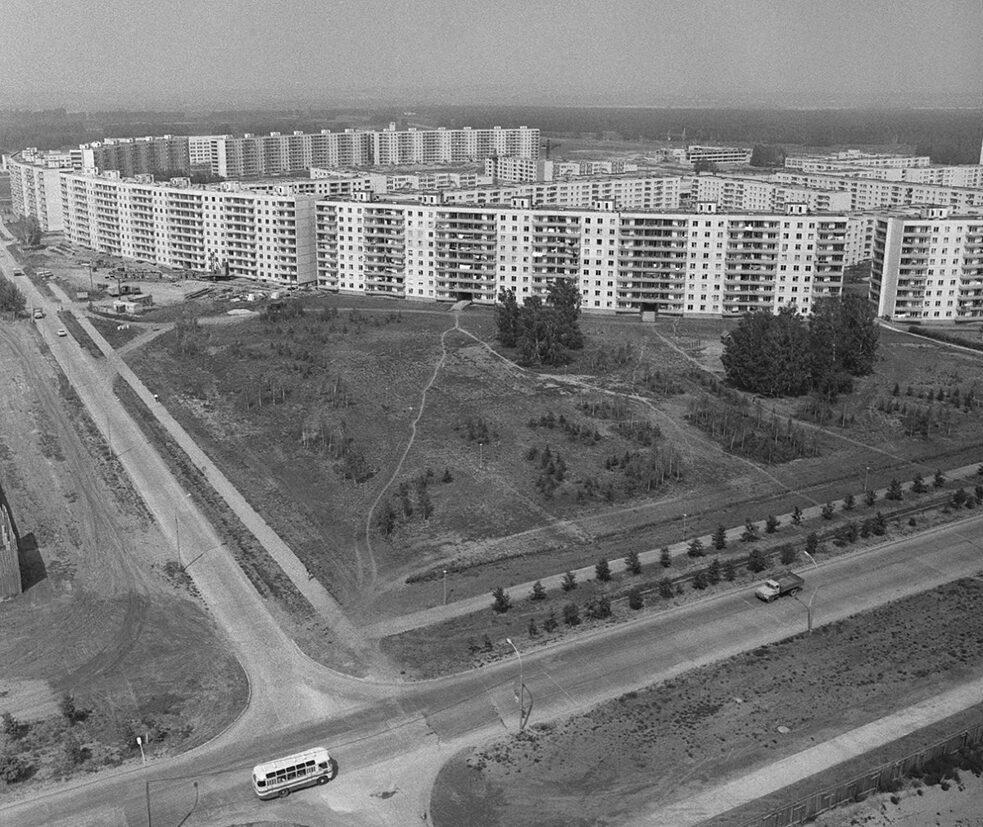Siberian branch of VASHNIL in the town of Krasnoobsk
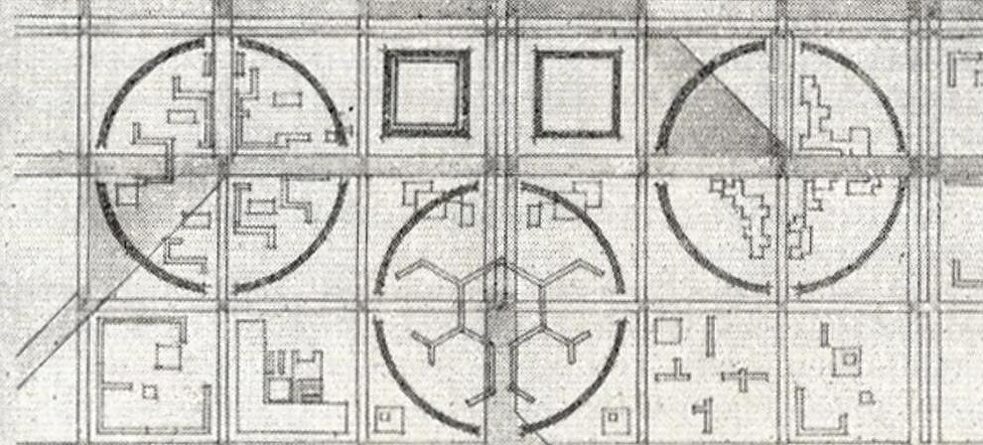
The science complex of the Siberian branch of the All-Union Academy of Agriculture in the town of Krasnoobsk | Architects Panfil, Platonov, Karpov, Sudarikov, Tyulenin, GiproNII, Academy of Sciences of the USSR, VNIPIET design organization, 1970
The Siberian branch of the All-Union Academy of Agriculture named after Lenin (VASHNIL) is the center of Siberian agricultural science. The concept of a science town lies in the basis of the design project of this town. Because of the agricultural focus, the project proved to be consonant with the Soviet concept of urban and rural convergence, creating a town of agricultural scientists living in an agrarian circular commune. To build a new town designed to house 30,000 people, a vacant territory was chosen on the plain, which housed the experimental fields of the agrarian research institutes. VASHNIL was built in the proximity of the Sibselmash agricultural machine factory. Sibselmash was established in the late 1920s, and VASHNIL in the 1970s. Both were meant to accelerate the agrarian progress of Siberia. The idea of “new vegetables” followed the idea of the “new Man”. “New vegetables” were meant forever to resolve the problem of hunger.
The search for an expressive architectural image that would solve the housing problem came in the form of three monumental circular structures consisting of residential buildings of different height. The shape of the circle was repeated in the exterior and interior elements. The high-rise buildings formed a circle around medium-sized residential buildings, day-care buildings, open yards, green spaces, and utility and culture buildings. The circles of residential buildings growing in the middle of a plain are reminiscent of a space installation. When viewed from above, the development inside the circle looks like Petri dishes with molecular structures.
The design used a modular regulation system developed by GiproNII. In the opinion of the designers, the system created a possibility of future modifications and allowed the developers to meet the demands of organizing the scientific process. With this system, it was possible to make any modifications to space and volume (additions, replacements, deletions) without violating the entire picture, the integrity of the composition, and the functional and technological ties among the interiors of individual buildings.
The research and public zones are situated at walking distance from the residential buildings. The research zone is designed as a complex consisting of institutes, the scientific agricultural library, and the meeting house built on a modular grid, forming a one-kilometer line connected with a continuous heated passage. Its purpose is to demonstrate symbolically the connection between institutes. However, in reality this distance has to be covered many times every day. A public zone with a mall is found at the geometric center of the town, enclosed by three circles of residential buildings and a line of institutes located on a four-meter-high stylobate. The lower level of the complex contains a system of entrances, relief tunnels, and parking lots.
Novosibirsk Akademgorodok, located on the opposite bank of the Ob River, offers a system of urban planning in the spirit of a horizontally oriented development of Stalinist buildings scattered in the woods, where different residential zones, although built in simplified modernist shapes, make evident the social hierarchy and segregated character of society. On the contrary, the architectural solution of VASHNIL is demonstratively egalitarian: it proposes a scientific, democratic, and supportive character of social life in the agrarian town.
A special detail of the design project – the residential zone of children’s playgrounds – was borrowed from the designs of the Dutch architect Aldo van Eyck; one of the ideologists of architectural structuralism who criticized post-war modernism and functionalism, and who was a member of the architectural group Team 10, which created a schism within the International Congresses of Modern Architecture CIAM. The use of similar solutions — recurrent circles in the plan, exterior and interior, through pedestrian passages connecting the buildings — indicate the designers’ sympathies and demonstrate the synthetic solution of the town of VASHNIL, in which functionalism is mixed with formalist tendencies.
